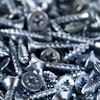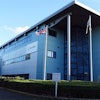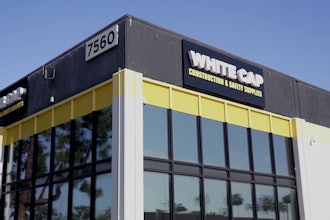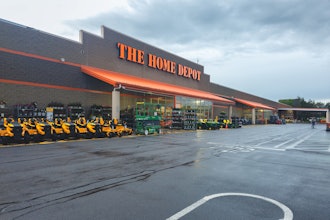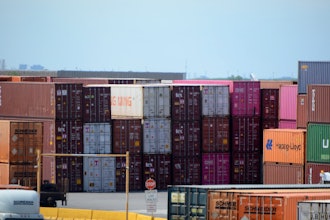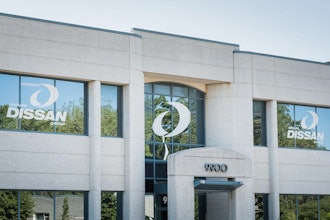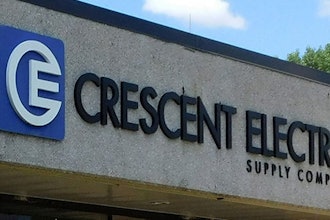People aren't spending money like they used to. Unemployment is still flirting with double digits. And the housing market is still shaky. So the future looks bleak for the economy, right?
Not necessarily.
A handful of surprisingly good earnings reports Thursday suggested that some of the major U.S. companies that make things and move them around — including Caterpillar, 3M and UPS — could lead the way to an economic recovery.
It would be an unusual path back to better times. Consumer spending and housing usually lead the way.
But all three of those economic bellwether companies, plus AT&T and Union Pacific railroad, indicated business was picking up. And most said they expected it to get even stronger later this year.
Peter Buchanan, a senior economist at CIBC World Markets, said executives have taken pains lately not to raise hopes too high for big profits in future quarters. That spread fear among investors that the economy might stall.
But he says earnings results from UPS and Union Pacific should help ease such worries.
"If you're moving stuff, it's a broad indicator covering spending by both businesses and consumers," Buchanan says. "Companies are erring on the side of caution in their forecasts ... but on the ground the real results don't look so bad."
As the economy struggles to mount a lasting recovery, Wall Street has been looking for evidence that companies are actually pulling in more money — not just increasing profits by ruthlessly cutting costs.
It certainly liked what it saw Thursday. The Dow Jones industrial average rose more than 200 points.
The big question is whether companies will stop hoarding cash and start spending more to expand their operations and hire freely. They're likely to do that only after they feel confident that demand from their customers will justify the cost of new hires. Outside the financial sector, American companies had stockpiled more than $1.8 trillion in cash through the end of March, a 26 percent increase over the same period in 2009.
If the rosy corporate outlooks give companies the confidence to step up hiring, "then this can be better than a good quarter or good second half" — it can mean the economy is good, said Chris Hobart of Hobart Financial Group in Charlotte, N.C.
Caterpillar, which makes heavy machinery and is considered a bellwether of manufacturing activity, said its orders were growing and it was selling more equipment to the mining and energy industries.
3M, which makes everything from Post-it notes to films for flat-screen televisions, said it was optimistic about the recovery and raised its forecasts for revenue and profits.
The good news wasn't limited to manufacturing. AT&T, which provides cellular service to the iPhone and iPad, reported higher profits and a raft of new customers. Union Pacific said it was taking on more carloads and expected to haul even more goods.
There were notes of caution, to be sure. UPS, for example, raised its earnings outlook but said much of its confidence about the rest of this year comes from international shipments.
And two government reports Thursday sent a reminder that the weak housing and job markets are making it hard for the recovery to take flight. Sales of previously occupied homes fell in June. And new claims for unemployment aid jumped last week. Together, they signaled that companies won't see demand from their U.S. customers jump anytime soon.
Separately, the Conference Board, a private research group, said its gauge of future economic activity dropped in June, the second decline in three months.
Still, the company results Thursday were far better news than Wall Street had received in most other batches of corporate earnings reports this week. Stocks for companies like General Electric, IBM and Texas Instruments had taken hits because of disappointing sales, even when profits were up.
Most of the forces that have brought the economy out of other steep downturns either aren't strong enough to do it this time or are absent altogether.
Spending by everyday Americans has risen an average of about 2½ percent in the most recent three quarters with available data. In the bounceback after the steep 1981-82 recession, it grew nearly three times as quickly.
The housing market has shown signs of life, but the housing collapse was part of what got the nation into its mess, and home prices face a long climb back. And the unemployment rate has stayed stubbornly close to 10 percent.
Federal Reserve chief Ben Bernanke told Congress on Thursday that the economy needs continued government stimulus spending to strengthen the recovery and reduce unemployment. But more stimulus spending would be a tough sell with congressional Republicans, who say the first round hasn't helped enough.
Steven Ricchiuto, chief economist at Mizuho Securities, said a manufacturing recovery can't lead to strong and sustained economic growth unless Americans are willing to shop more. Spending by consumers accounts for 70 percent of U.S. economic activity.
"The idea was that the manufacturers would grow, and then we'd get new jobs and the consumer would take over," he says. "But consumer spending has been exceptionally weak."
Wall Street, at least, appeared to be betting Thursday that consumer spending and housing would both pick up. The Standard & Poor's index of retail stocks surged about 3 percent, outperforming the broader market. Homebuilder stocks rose, too.


